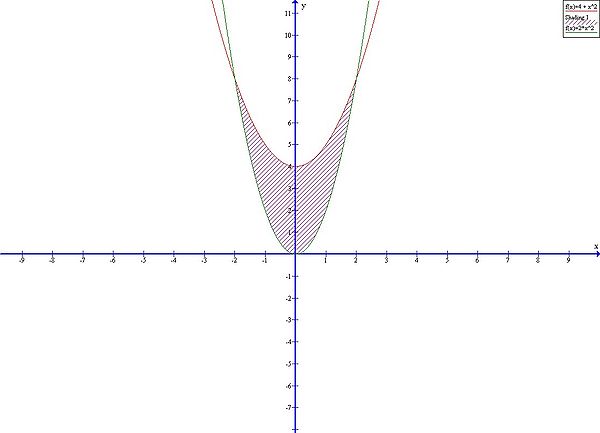Science:Math Exam Resources/Courses/MATH101/April 2008/Question 02 (a)
{{#incat:MER QGQ flag|{{#incat:MER QGH flag|{{#incat:MER QGS flag|}}}}}}
• Q1 (a) • Q1 (b) • Q1 (c) • Q1 (d) • Q1 (e) • Q1 (f) • Q1 (g) • Q2 (a) • Q2 (b) • Q2 (c) • Q2 (d) • Q3 (a) • Q3 (b) • Q3 (c) • Q3 (d) • Q4 (a) • Q4 (b) • Q5 (a) • Q5 (b) • Q6 • Q7 (a) • Q7 (b) •
Question 02 (a) |
|---|
|
Full-Solution Problem. Justify your answers and show all your work. Simplification of answers is not required. Sketch the bounded region that lies between the curves and , and find its area. |
|
Make sure you understand the problem fully: What is the question asking you to do? Are there specific conditions or constraints that you should take note of? How will you know if your answer is correct from your work only? Can you rephrase the question in your own words in a way that makes sense to you? |
|
If you are stuck, check the hints below. Read the first one and consider it for a while. Does it give you a new idea on how to approach the problem? If so, try it! If after a while you are still stuck, go for the next hint. |
Hint 1 |
|---|
|
A picture will really help here. Try finding the points of intersection to give you a starting point. |
Hint 2 |
|---|
|
Which curve is the top most curve? |
|
Checking a solution serves two purposes: helping you if, after having used all the hints, you still are stuck on the problem; or if you have solved the problem and would like to check your work.
|
Solution |
|---|
|
A picture is included below. First, we try to find the points of intersection. To do this, make the two curves equal so
and solving for x gives
Now, from the picture (or by plugging in into both curves), it is clear that is the top most curve. Hence, we need to compute
where the last equality holds above since the function is an even function over a symmetric interval. Thus,
completing the question. |
{{#incat:MER CT flag||
}}









